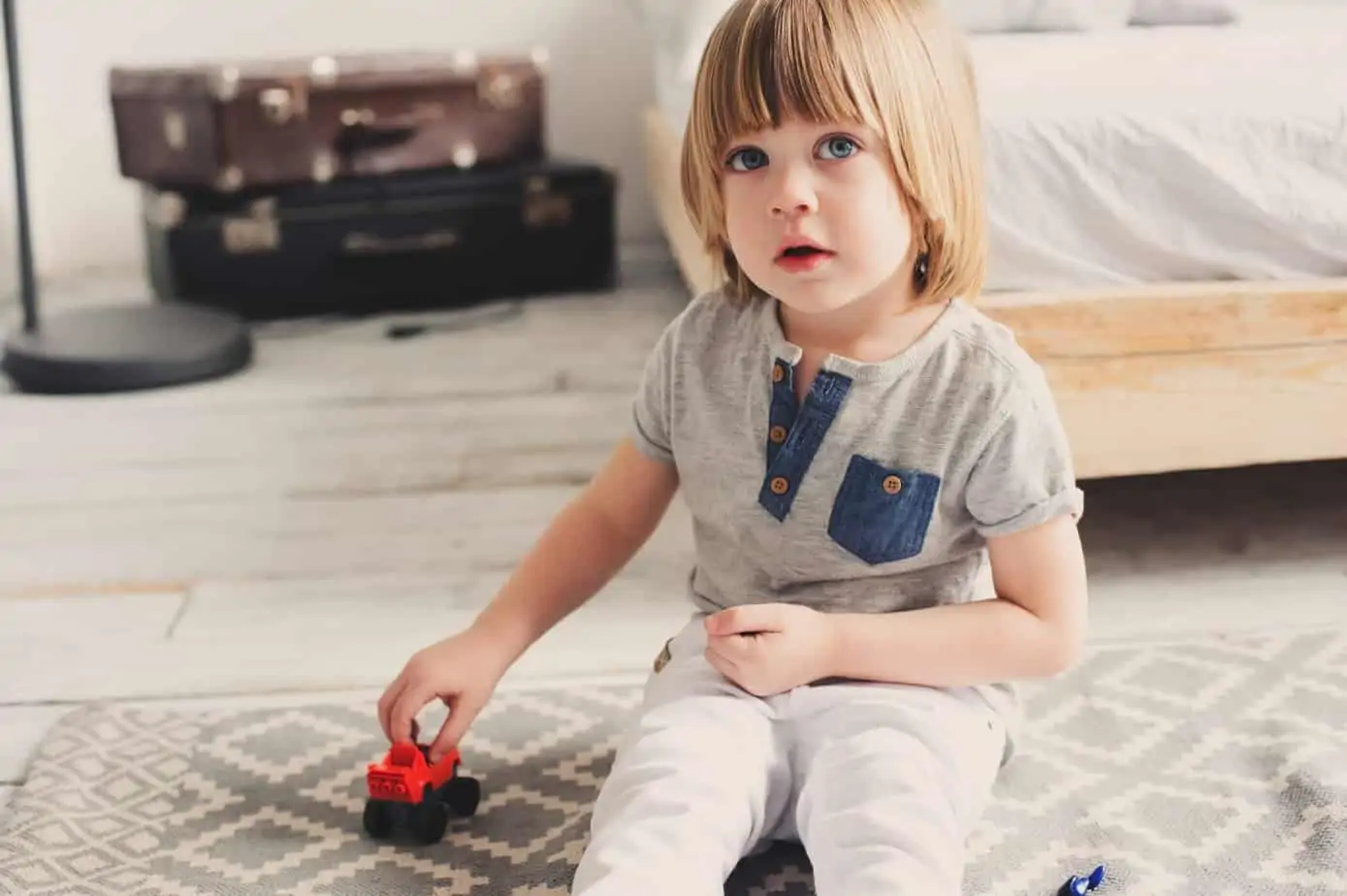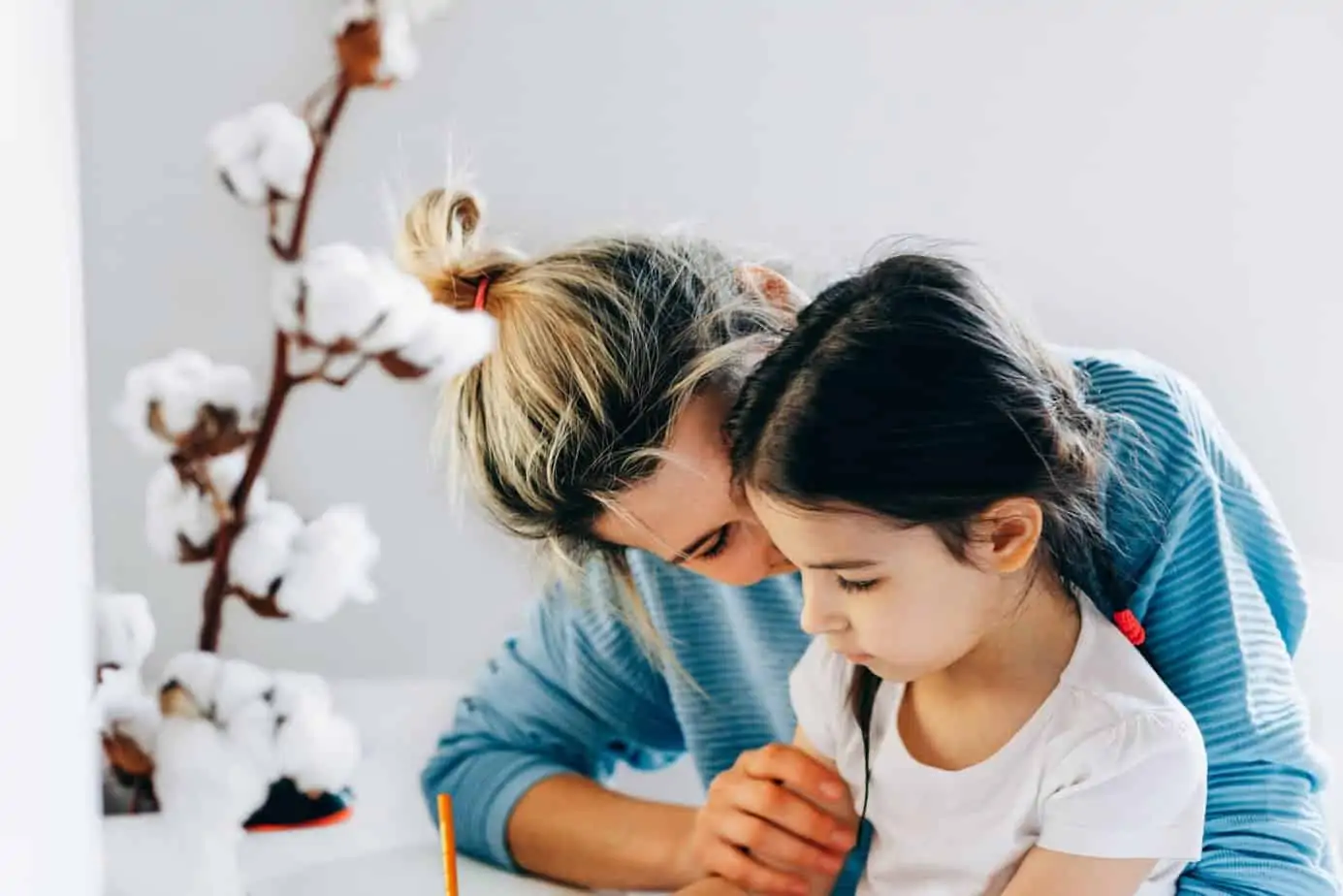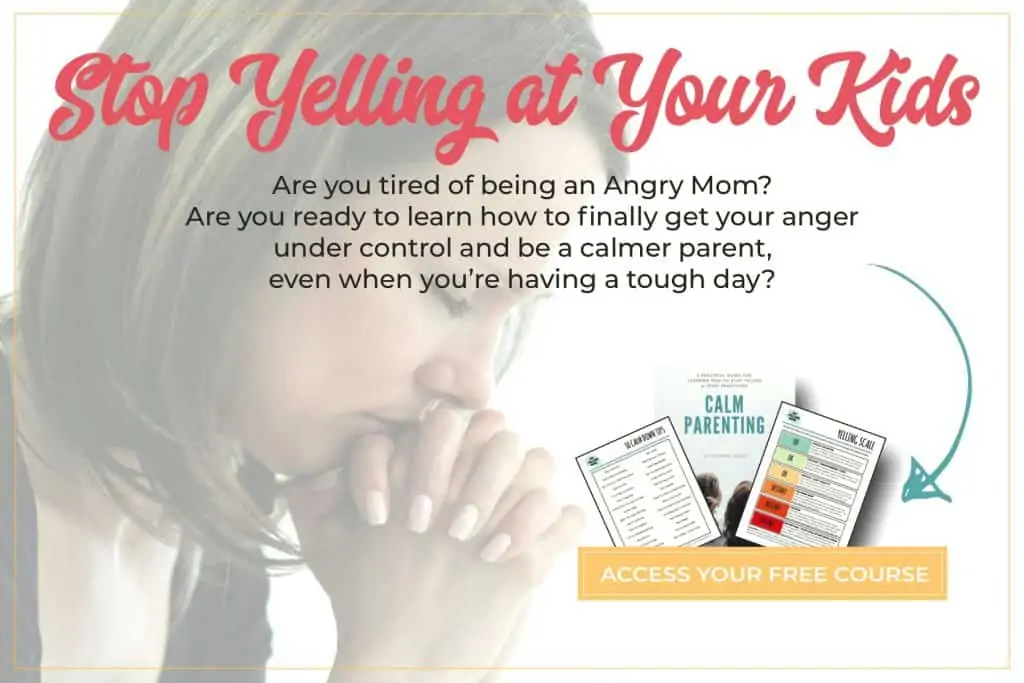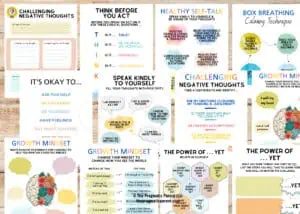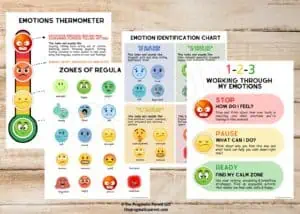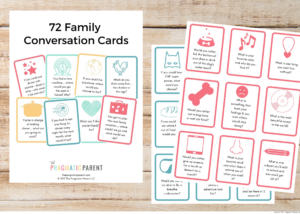Here’s why you need to stop labeling a child, and the consequences of these permanent actions. How to label behavior of a child and get them to make different choices with their actions. Check out the emotions identification toolkit to help kids dive deep into their feelings and emotions and uncover what’s going on under the surface and feel confident to communicate these revelations.
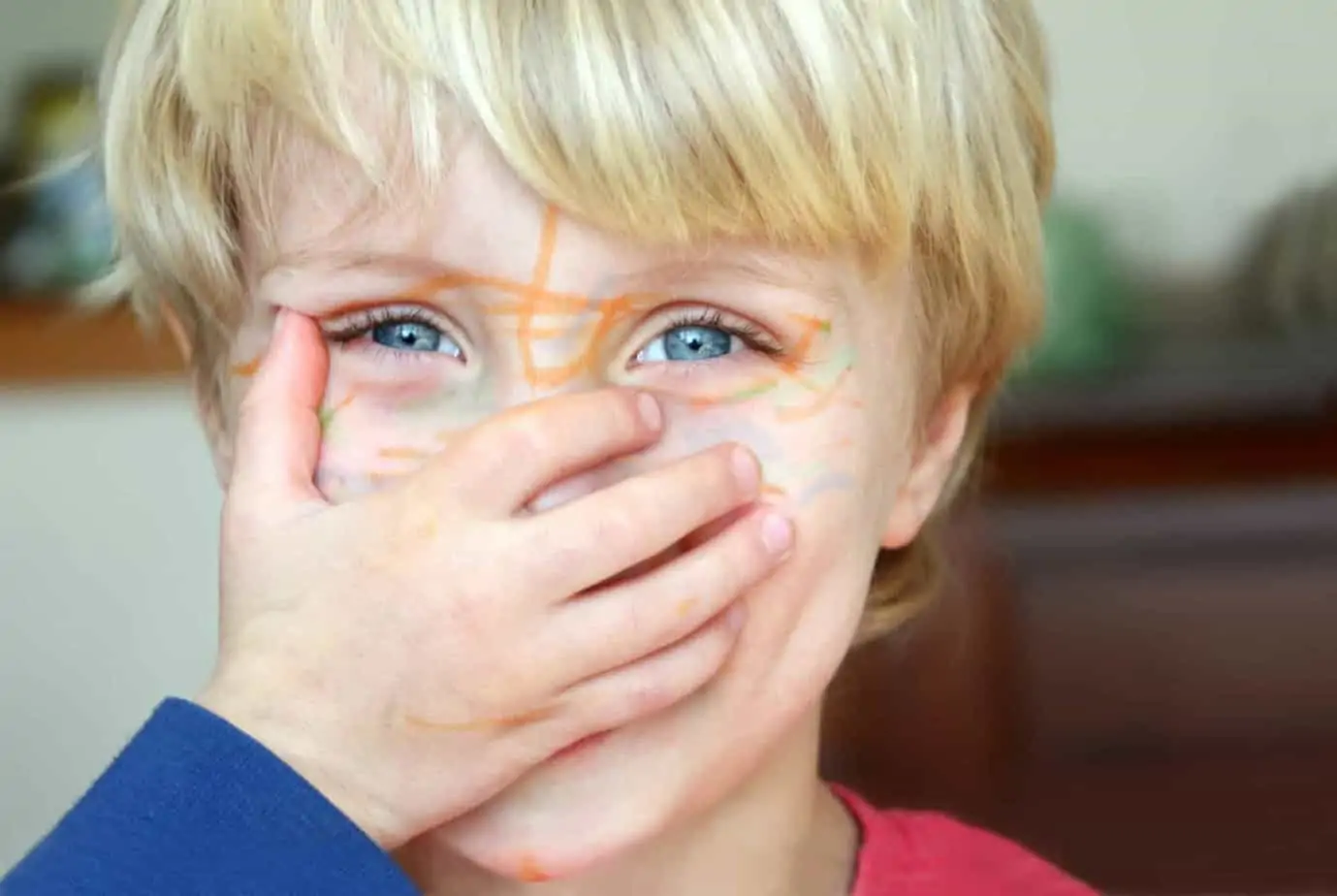
Labeling Hurts Kids: Label the Action & Behavior Instead of the Child
It’s pretty easy in the heat of the moment to say things we don’t mean, and even things we don’t think will stick with our kids for more than the three seconds after we say them.
Stuff like “why do you have to be so difficult?” or “you’re not very nice,” can have long-lasting impacts we don’t realize as we’re saying them.
That’s because when we label the child, instead of the behavior and emotions which triggered such behavior, we’re creating a permanent trait of who the child thinks they are.
What Exactly is Labeling a Child?
It’s easy to use labels – stubborn, mean, grumpy, rude, sassy, bossy, jerk, selfish, liar, difficult, hard, baby, whiner, etc – as if these traits are who they are.
They aren’t.
We might think these things in the moment, but when we say them aloud, it begins to shape how a child sees themselves because their biggest influence – the family unit – sees them this way.
And if they’re told this is who they are, then it must be true, right?
I know as parents, that’s the last thing we want for our children… to think of themselves as stubborn or grumpy or difficult.
The problem is that while we may think of these statements as innocent or harmless, is that when we use them, we label the child, instead of the action.
It’s a dangerous mistake, but the good news is that there’s a simple change to help you correct course, and tap into your child’s emotional development to help them make better choices, along the way.
So, how you do stop doing this and start labeling behavior instead?
Want Help Supporting Your Child’s Big Emotions? Check Out These Resources:
Step 1: Parents Have to Stop Thinking and Speaking in Ways That Label a Child
As parents, it’s easy to use labels when we think of our children’s behavior such as, “my son is so difficult” or “she’s turning into a rude tween!”
The problem with labels is that the child is not these things – it’s their behavior, and yet labels don’t distinguish this difference.
We can see the child isn’t difficult 24-hours a day, but the label of who they are becomes stuck in our brains and can eventually becomes how we see the child – unless we change the way we talk to ourselves.
Subconsciously distinguishing between who the child is as a person and their behavior stops the message from becoming ingrained that your child is inherently hard, stubborn, difficult, mean, whiny, etc.
First, you have to be aware of your thoughts and then course correct when you say labels subconsciously, to label the action and not your child.
The more you practice seeing your child as separate from their actions, the more connected you’ll become and see them for their better qualities, than the ones that drive you nuts or stretch your patience.
Step 2: Learn to Only Label the Child’s Behavior and Action
Step 2: Labeling the ACTION, Not the Child
Permanent traits of a person are things like their hair color, height, where they live, what their favorite food is, who their family members are, etc.
What are the effects of labelling?
When we label a child, such as saying they’re “stubborn” or that they “always make things hard,“ it sends the message that these are also permanent traits.
When your child hears you – whether through your words towards them, behavior towards them or overhearing conversations about them – they’ll begin to believe this is simply who they are.
And that’s a pretty difficult narrative to change.
Think of it as the difference between saying, “You’re a bad kid,” and “You did a bad thing.”
Even if the child threw a toy and broke a picture frame, it doesn’t make him a bad kid, it only make his choice to unleash his big emotions and uncontrollable behavior a bad choice.
Those are two very different things, right?
And when you put yourself in your child’s shoes…
- What hurts more for them to hear?
- What would make a child think of themselves as a bad kid?
- What statement would make a child have different choices the next time?
- Is the child a bad person or did they make a bad choice?
This is what labeling the child and labeling the behavior can do.
The Good News is That Labeling Behavior is Easy to Change!
Switching the label directed at a child, to their behavior and choices, gives them opportunities to turn things around and make better decisions the next time.
Talking about behavior and uncovering the big emotions that were triggered before the behavior took place, will help a child choose differently the next time.
Responding with empathy and labeling the behavior will always give you greater results than reacting swiftly, and labeling a child.
This also tells the child that no matter what, regardless of their behavior and big emotions, that they’re still a good person and you love them.
When you label the child, they don’t feel this way and that’s hard to come back from.
If you child has a good grasp on their emotions (we love these emotion picture cards for this reason, but Emotions A-Z is a quick-start video course to share with parents how to talk about and teach emotions), but then you can start developing other skills.
You can help children to develop calm down and coping skills, even a quiet calm down space in your home.
Try this now: notice how you speak in your head about your child, how you speak to them, how you speak about them, and then try to avoid placing permanent labels on them. Choose to label their behavior, emotions, and choices… the less permanent parts of them, so they can evolve and do better the next time.
Related Resources:
- Emotion Picture Cards Boost Kid’s Understanding of Emotions
- Emotions A-Z: Quick-start Video Course to Help Parents Teach Emotions & Calm Down Skills
- How to Create a Quiet Calm Down Space
- Negative Language Hurts Kids – How to Improve The Way We Talk to Children
- How to Respond to Your Child’s Negative Self Talk & When They Want to Give Up
- Anger Management: Calm Down Tools Kids Can Use Anywhere
